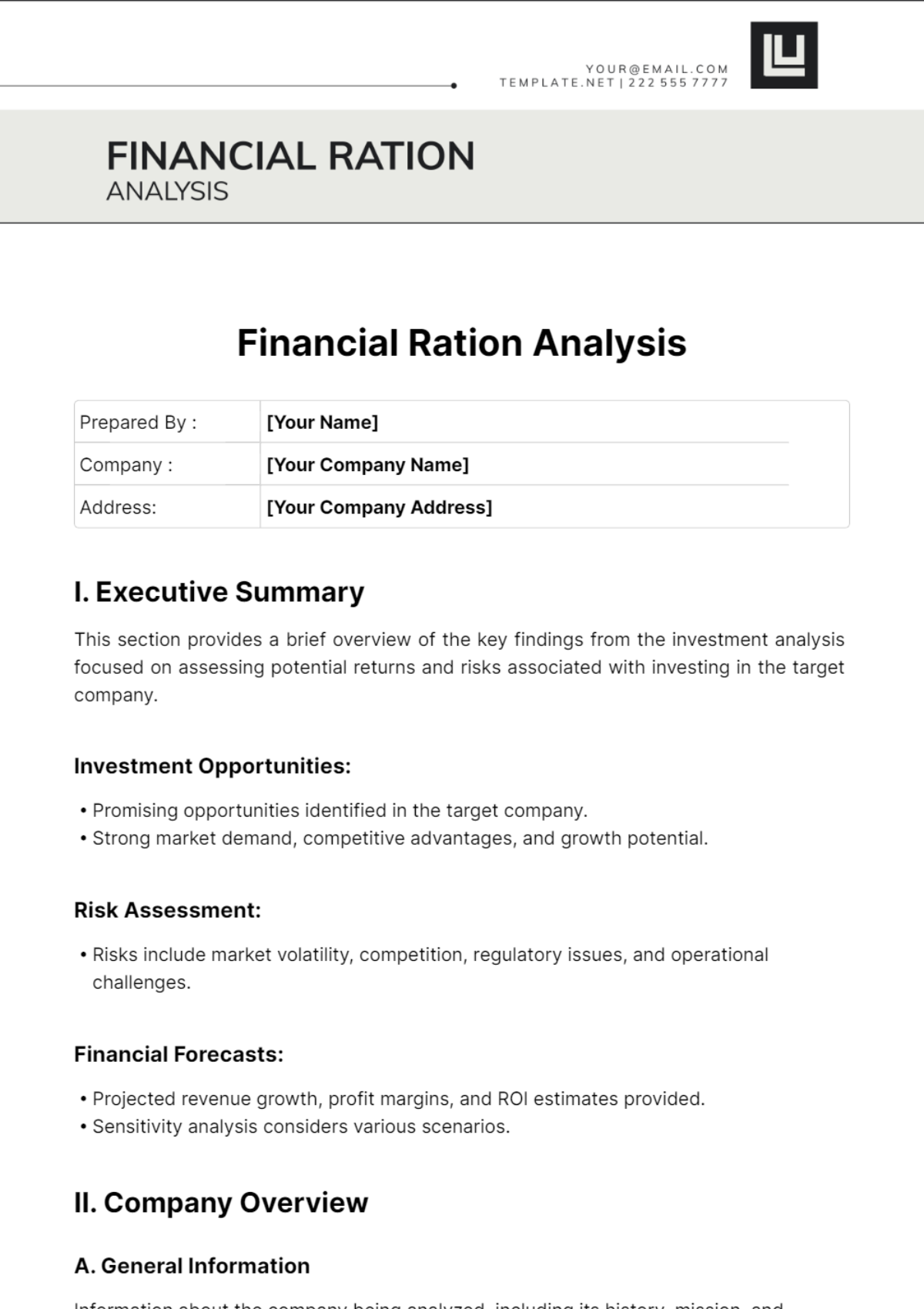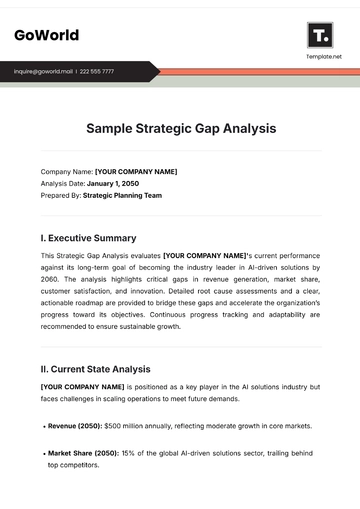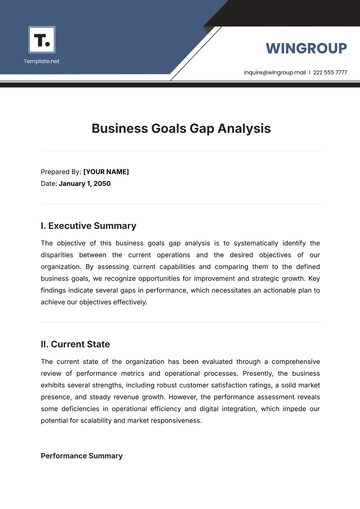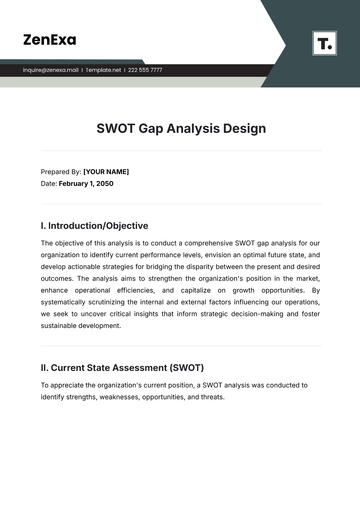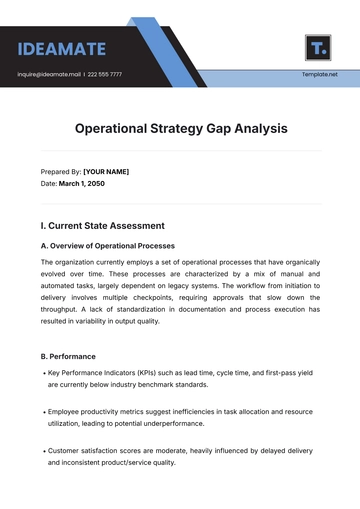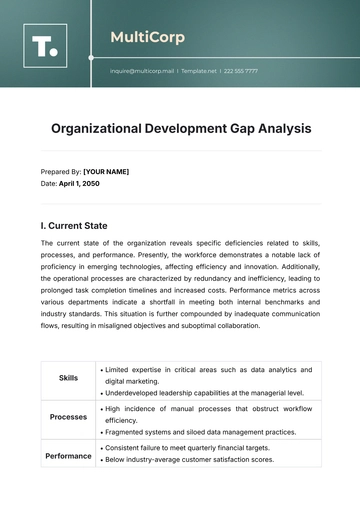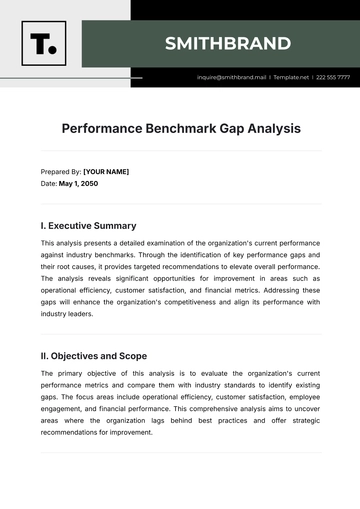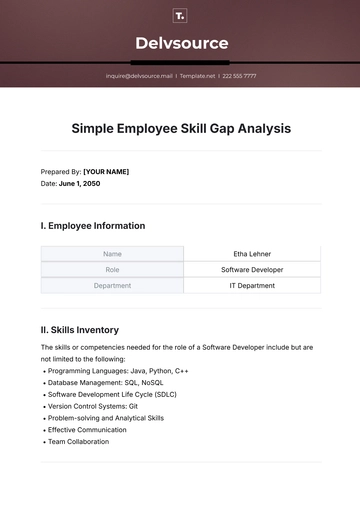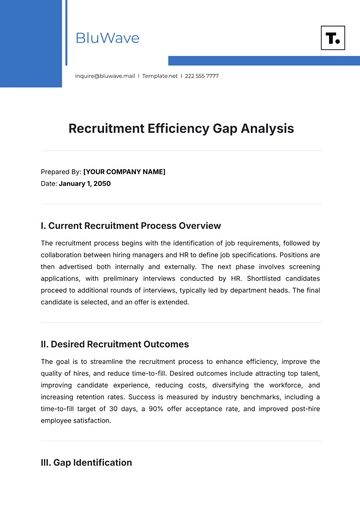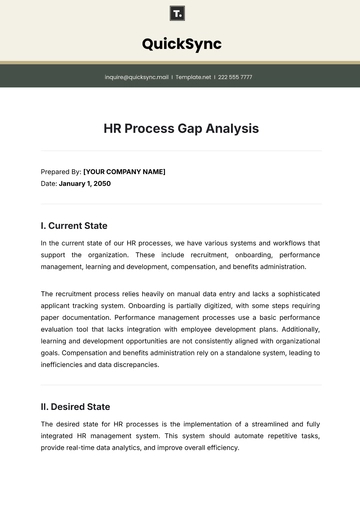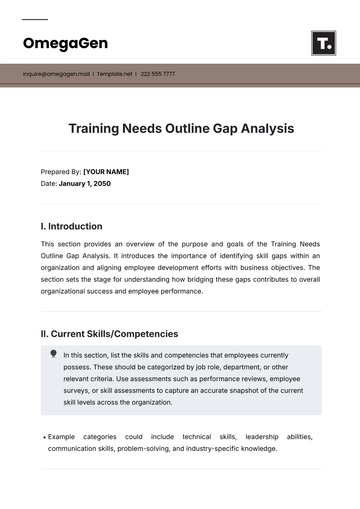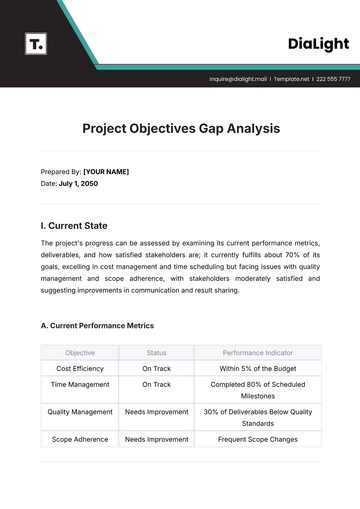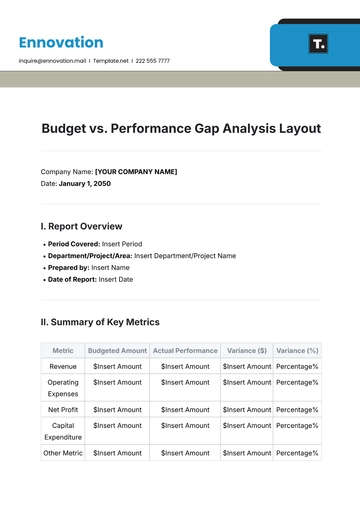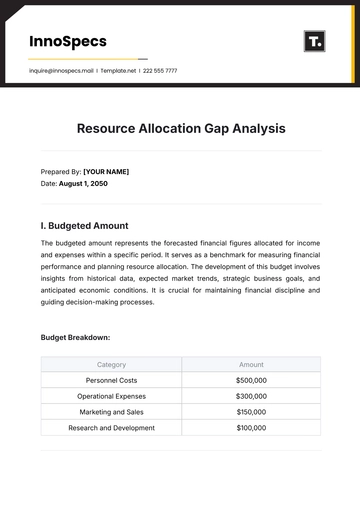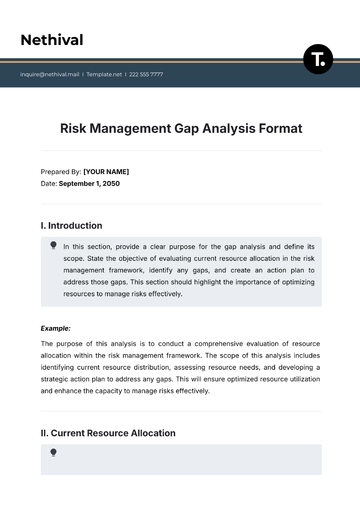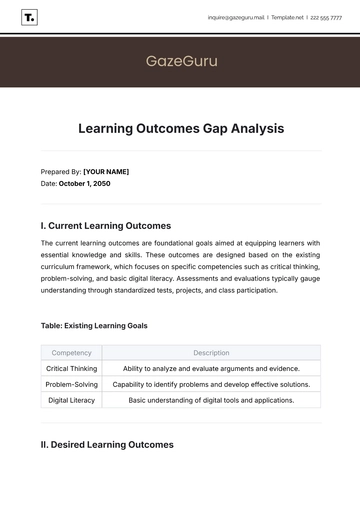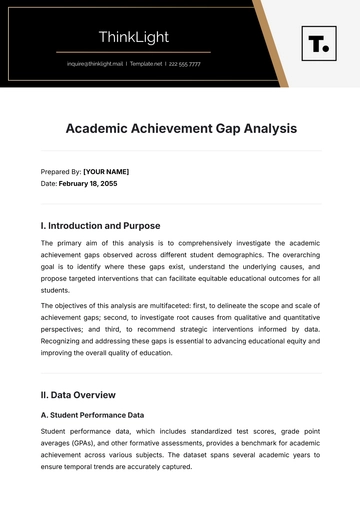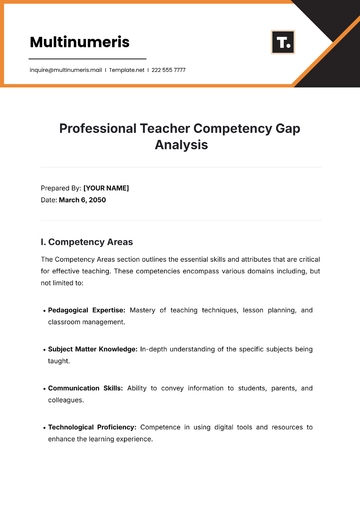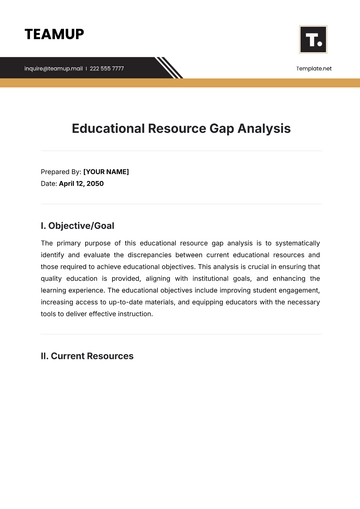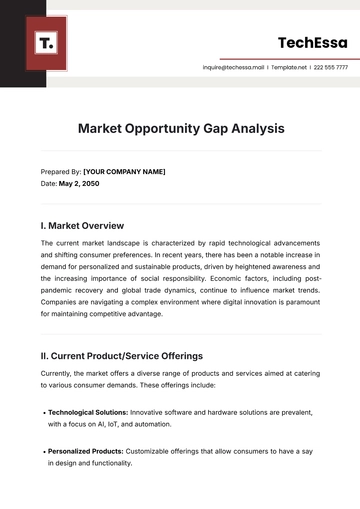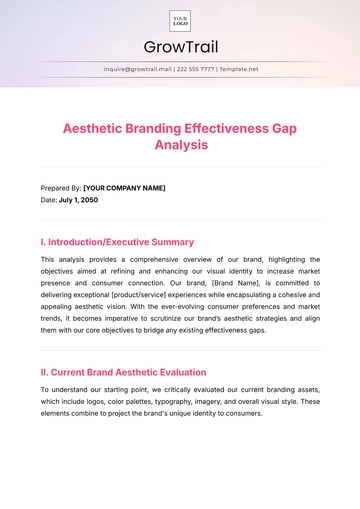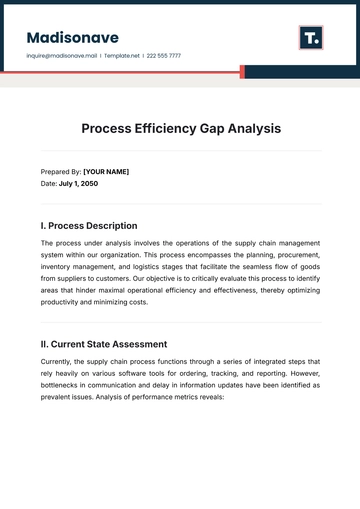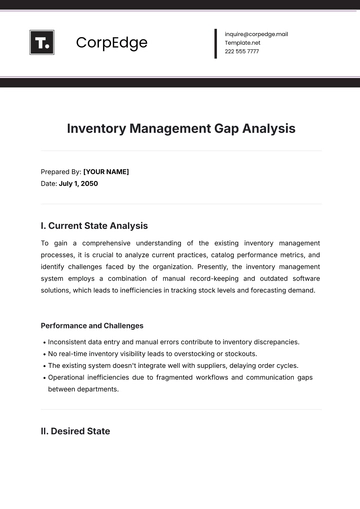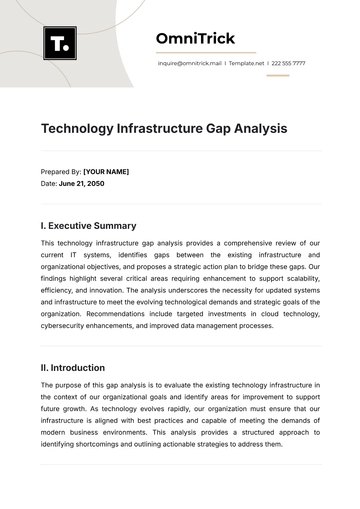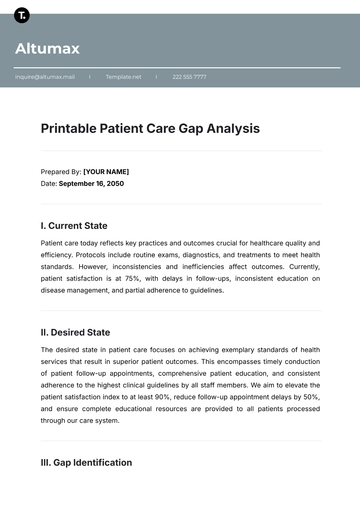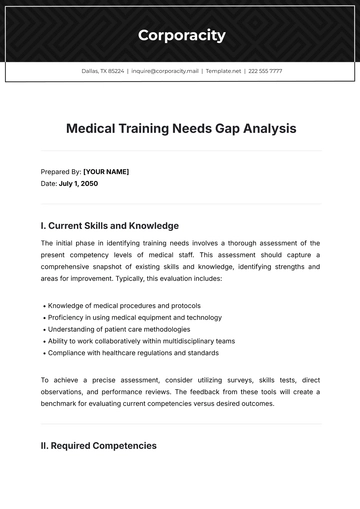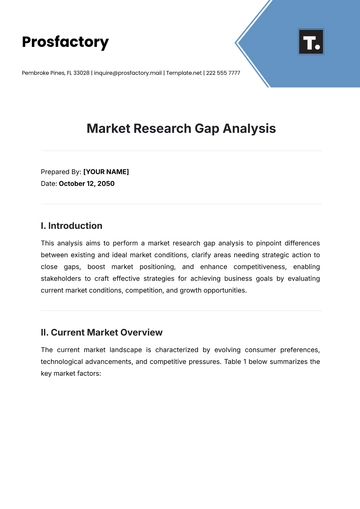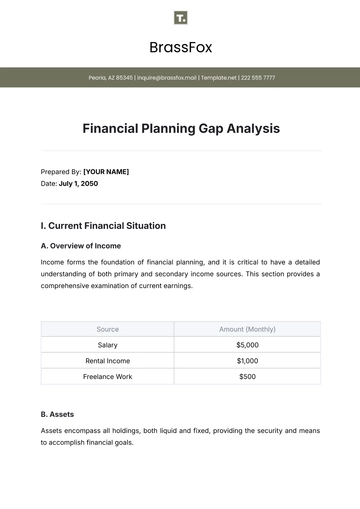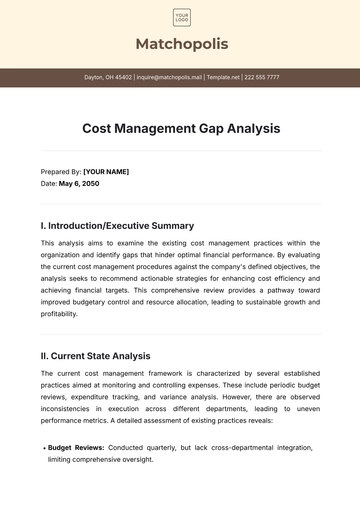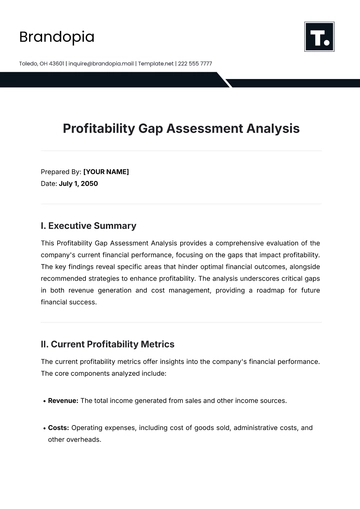Financial Ration Analysis
Prepared By : | [Your Name] |
Company : | [Your Company Name] |
Address: | [Your Company Address] |
I. Executive Summary
This section provides a brief overview of the key findings from the investment analysis focused on assessing potential returns and risks associated with investing in the target company.
Investment Opportunities:
Promising opportunities identified in the target company.
Strong market demand, competitive advantages, and growth potential.
Risk Assessment:
Financial Forecasts:
Projected revenue growth, profit margins, and ROI estimates provided.
Sensitivity analysis considers various scenarios.
II. Company Overview
A. General Information
Information about the company being analyzed, including its history, mission, and business model.
B. Financial Performance
Analysis of the financial health of the company over the past few years.
Annual Revenue: Beyond just examining revenue figures, it's crucial to analyze revenue trends over several years. Are there consistent growth patterns, or are there fluctuations that need to be addressed.
Profit Margins: Understanding the company's profitability is essential. This involves not only looking at gross profit margins but also net profit margins to gauge how efficiently the company is operating.
Growth Rate: Examining the growth rate of various financial metrics such as revenue, earnings, and market share can provide insights into the company's trajectory and potential future performance.
III. Market Analysis
Insights into the market environment in which the company operates, including competitive landscape and market trends.
Industry Overview: A thorough understanding of the industry in which the company operates is vital. This includes factors such as market size, growth potential, regulatory environment, and key drivers of industry performance.
Competitor Analysis: Assessing competitors' strategies, market positioning, strengths, and weaknesses can help identify areas where the company can gain a competitive advantage or areas that pose threats to its market share.
Consumer Trends: Keeping abreast of evolving consumer preferences, behaviors, and purchasing patterns is critical for anticipating market demand and adjusting business strategies accordingly.
IV. Investment Analysis
A. Investment Opportunities
Detailed discussion on potential areas for investment and their expected outcomes.
Equity Investment: Evaluating potential equity investments involves analyzing factors such as the company's valuation, growth prospects, and market sentiment.
Debt Financing: Assessing the viability of debt financing options requires examining factors such as interest rates, repayment terms, and the company's ability to service debt.
Merger and Acquisition Opportunities: Identifying potential merger or acquisition targets involves conducting due diligence to assess factors such as strategic fit, valuation, synergies, and potential risks.
B. Risk Assessment
Evaluation of risks associated with investment opportunities identified.
Market Risk: Assessing market risk involves evaluating factors such as economic conditions, market volatility, and geopolitical uncertainties that could impact investment returns.
Credit Risk: Analyzing credit risk involves assessing the likelihood of default by borrowers if investing in debt instruments or extending credit to customers.
Operational Risk: Identifying operational risks involves evaluating factors such as supply chain disruptions, regulatory compliance issues, and cybersecurity threats that could affect the company's ability to execute its business plan effectively.
V. Financial Projections
Long-term financial forecasts based on current and projected investment scenarios.
Year | Revenue Forecast | Profit Forecast |
|---|
1 | $1,000,000 | $200,000 |
2 | $1,500,000 | $350,000 |
3 | $2,000,000 | $500,000 |
Explanation:
Year 1 (Current Year):
Revenue Forecast: $1,000,000
Profit Forecast: $200,000
In the first year, Tech Innovations Inc. expects to generate $1,000,000 in revenue with a profit of $200,000. This projection is based on the company's current market position and expected growth trajectory.
Year 2:
Revenue Forecast: $1,500,000 (an increase of $500,000 from Year 1)
Profit Forecast: $350,000 (an increase of $150,000 from Year 1)
In the second year, the company anticipates a revenue increase to $1,500,000, driven by expanded market reach and product/service innovation. This higher revenue is expected to result in a profit of $350,000.
Year 3:
Revenue Forecast: $2,000,000 (an increase of $500,000 from Year 2)
Profit Forecast: $500,000 (an increase of $150,000 from Year 2)
By the third year, Tech Innovations Inc. aims to achieve a revenue milestone of $2,000,000, fueled by further market penetration and increased customer adoption. This growth trajectory is expected to yield a profit of $500,000.
VI. Recommendations
Strategic advice based on the analysis conducted, guiding the investor on possible next steps.
Investment Strategy Development:
Define Goals: Clarify investment objectives.
Assess Risk: Determine risk tolerance.
Allocate Assets: Diversify across stocks, bonds, real estate.
Active/Passive: Choose between active or passive management.
Rebalance: Periodically adjust portfolio.
Portfolio Diversification:
Across Assets: Spread investments across classes.
Geographic: Invest globally to reduce country-specific risk.
Sector & Size: Diversify within sectors and company sizes.
Risk Mitigation:
Asset Allocation: Spread investments to reduce risk.
Stop-loss Orders: Set limits to protect against significant declines.
Dollar-Cost Averaging: Invest regularly to mitigate market volatility.
Hedging: Use options or futures contracts for downside protection.
Monitor: Regularly review and adjust portfolio.
VII. Conclusion
A concise wrap-up of the findings and the analyst's perspectives on the future outlook for investment.
Analysis Templates @ Template.net
